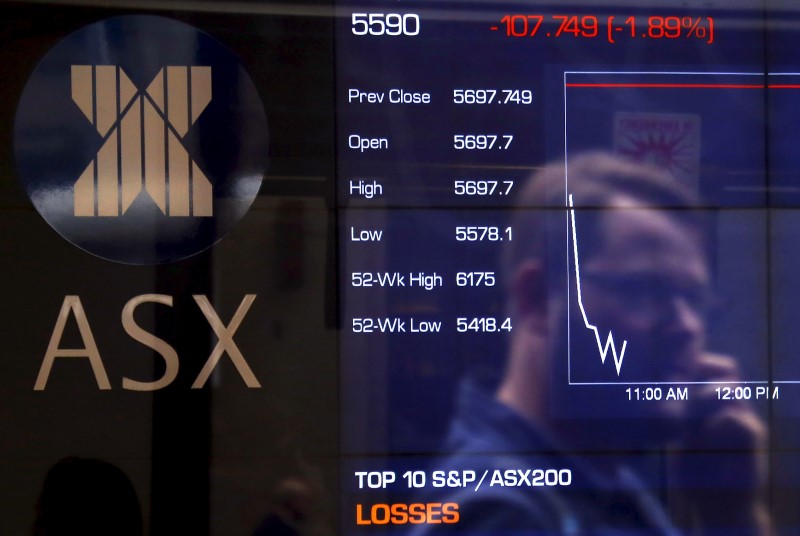The ASX is expected to slip today. ASX 200 futures are 3 points lower at 6,980, which is no surprise after the market ended Friday with its worst weekly losing streak since 2008.
Retail and monthly inflation data is due this week, which is likely to impact the market further, with another Reserve Bank of Australia (RBA) decision just a week or so away.
While it is likely to hold the cash rate, given what happened in the US last week with a further 0.25% raise despite the banking crisis, nothing is guaranteed.
The US wasn’t the only central bank to lift rates.
The BoE, SNB and Norges Bank all lifted their cash rates as they continue to prioritise fighting inflation.
A week of madness
It was a crazy week overall. We saw the takeover of the second-largest Swiss Bank, CSFB, mixed messages from US regulators around protection for bank deposits over $250,000.
Germany’s largest bank Deutsche Bank (ETR:DBKGn) saw its share price close 8.5% lower on Friday, while money market funds saw $143 billion of inflows, the biggest weekly inflow into cash since March 2020.
In all the madness, the S&P500 rose for a second consecutive week up 1.39%. The Nasdaq gained 1.97% and the Dow Jones added 375 1.18%.
“This week attention will again be on the banking sector as markets continue to press for banking pressure points and, uncapped deposit guarantees across the US banking system,” IG analyst Tony Sycamore said.
“The market will also focus on the spillover effects of the banking crisis on credit flow, growth, inflation and the path of central bank policy.”
Sycamore believes a rally could be on the cards for the ASX after it was dragged down by Property (-3.17%), Financials (-1.89%) and IT (-0.89%).
“Providing the ASX 200 continues to hold above support 6910/00, the pullback from the February 7567 high is viewed as a countertrend, and a rebound is expected to follow,” Sycamore said.
“Aware that should the ASX200 see a sustained break below support at 6910/00, it would negate the positive bias and warn of a retest of the bottom of the 12-month range at 6410.”
Here’s what we saw (source Commsec):
European sharemarkets fell on Friday. Shares in Deutsche Bank fell 8.5%. Reuters noted that the fall was in response to a "sharp jump in the cost of insuring against the risk of default. The German heavyweight said that it would redeem $1.5 billion of Tier 2 notes due in 2028."
Shares in UBS fell 3.6% and Credit Suisse (SIX:CSGN) lost 5.2% after "Bloomberg News reported they were among the banks under scrutiny in a US Department of Justice probe into whether financial professionals helped Russian oligarchs evade sanctions." European banks lost 3.8%. The continent-wide FTSEurofirst 300 index and the UK FTSE 100 index both lost 1.3%.
Major currencies were weaker against the US dollar in European and US trade.
The Euro fell from US$1.0835 to US$1.0715 and was near US$1.0760 at the US close.
The Aussie dollar fell from US66.93 cents to US66.25 cents and was near US66.45 cents at the US close. And the Japanese yen eased from 129.66 yen per US dollar to JPY130.87 and was near JPY130.69 at the US close.
Global oil prices fell by around 1% on Friday on end-week profit-taking. The Brent crude oil price fell by US92 cents or 1.2% to US$74.99 a barrel.
The US Nymex crude oil price lost US70 cents or 1.0% to US$69.26 a barrel. Over the week Brent crude rose US$2.02 or 2.8% with Nymex up US$2.52 or 3.8%.
Base metal prices were mixed on Friday. The copper futures price fell by 1.1%. But the aluminium futures price lifted by 0.4%. Over the week metals generally rose with aluminium up 3.9%, copper up 3.2% and nickel up 2.8%.
The gold futures price fell by US$12.10 or 0.6% to US$1,983.80 an ounce. Spot gold was trading near US$1,977 an ounce at the US close. Over the week gold rose by US$10.30 or 0.5%.
Iron ore futures fell by US65 cents or 0.5% to US$126.01 a tonne. Over the week iron ore fell by US$3.99 or 3.1%.
